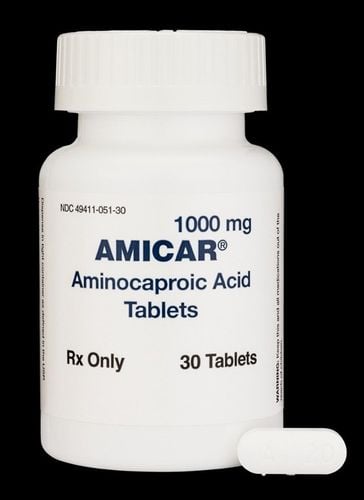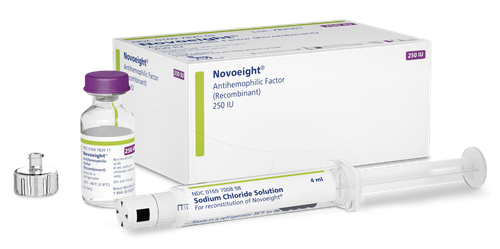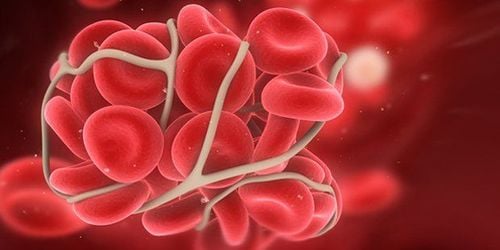This is an automatically translated article.
Coagadex, whose main active ingredient is clotting factor X, is indicated for the treatment and prevention of bleeding in patients with hereditary factor X deficiency. The article will provide information about the uses, dosage and notes when using Coagadex.1. What are the effects of Coagadex?
Coagadex is the first and only treatment specifically for hereditary factor X deficiency. Coagadex's main active ingredient is clotting factor X. It is used to treat and prevent bleeding (including during and after surgery) in patients with hereditary factor X deficiency.
Factor X deficiency is a rare bleeding disorder caused by a deficiency of factor X, a protein required for normal blood clotting. In these patients, blood clots do not form properly, leading to bleeding that is difficult to stop and poor wound healing. The active ingredient in Coagadex is human factor X isolated from blood donor plasma. By replacing missing factor X, Coagadex helps blood to clot more easily and temporarily controls bleeding. The drug is contraindicated in patients who have had a life-threatening hypersensitivity reaction.
2. Dosage and usage of Coagadex
Coagadex is given by injection into a vein. The dose and frequency of injection will depend on the severity of the factor X deficiency, extent, site of bleeding, condition, and body weight of the patient. Coagadex can only be purchased by prescription and treatment should be initiated under the supervision of a physician experienced in the treatment of rare bleeding disorders. Patients can self-inject Coagadex at home after appropriate training. For more information on how to use Coagadex, patients should see the leaflet or contact their doctor or pharmacist for advice.
3. What are the side effects of Coagadex?
Coagadex can cause side effects including: Feeling tired, back pain, pain, stinging or redness where the injection was given, fever or chills, cough, body aches and lack of energy. Patients should seek medical care immediately if they have signs of an allergic reaction including: rash, tingling, wheezing, chest tightness, difficulty breathing, rapid heartbeat, swelling of the face, lips, tongue or throat. In addition, patients should also contact their doctor if new bleeding appears and worsens.
4. Notes when using Coagadex
To ensure safety when using Coagadex, patients should note the following issues:
Patients using Coagadex may experience allergic-type hypersensitivity reactions, including anaphylaxis. Initial signs of a hypersensitivity reaction include angioedema, infusion site inflammation (eg, burning, stinging, erythema), chills, cough, dizziness, fever, flushing, musculoskeletal pain, sadness vomiting, generalized urticaria, headache, urticaria, hypotension, coma, pruritus, rash, restlessness, tingling, vomiting, tachycardia, chest tightness, wheezing. If symptoms of hypersensitivity occur, discontinue use of the product immediately and initiate appropriate emergency treatment. When Coagadex is used, the formation of neutralizing antibodies to factor X may occur. Monitoring of all Coagadex-treated patients is recommended for early detection of neutralizing antibodies by observation. appropriate clinical and laboratory tests. Since Coagadex is made from human blood, it may pose a risk of transmitting infectious agents such as viruses. In addition, there is also the possibility of contamination with unknown agents that may be present in the product. The risk of virus transmission has been minimized by screening plasma donors with matching testing. In addition, measures to inactivate or remove certain viruses during the production process also help minimize this situation. Lactation: There is no information regarding the presence of Coagadex in breast milk, effects on nursing infants, or effects on milk production. Before administering the drug, the benefits of breastfeeding should be considered, the mother's need for treatment with Coagadex, and any potential adverse effects on the nursing infant. Use in children: Coagadex has been studied in some young children and adolescents under 16 years of age Use in the elderly: Clinical studies of Coagadex have not included sufficient numbers of patients 65 years of age and older. up. Clinical reports have not identified a difference in response between elderly and younger patients. In general, dose selection for elderly patients should be cautious, often starting at a low level due to the risk of impaired liver and kidney function. Above is all information about Coagadex, patients need to carefully read the instructions for use, consult a doctor / pharmacist before using. Note, Coagadex is a prescription drug, patients absolutely must not buy and treat at home because they may experience unwanted side effects.
References: Drugs.com













